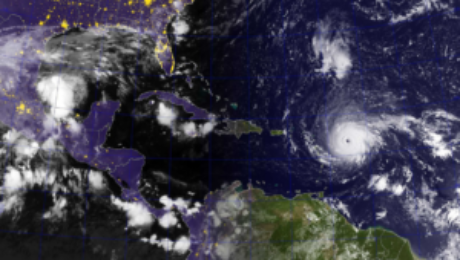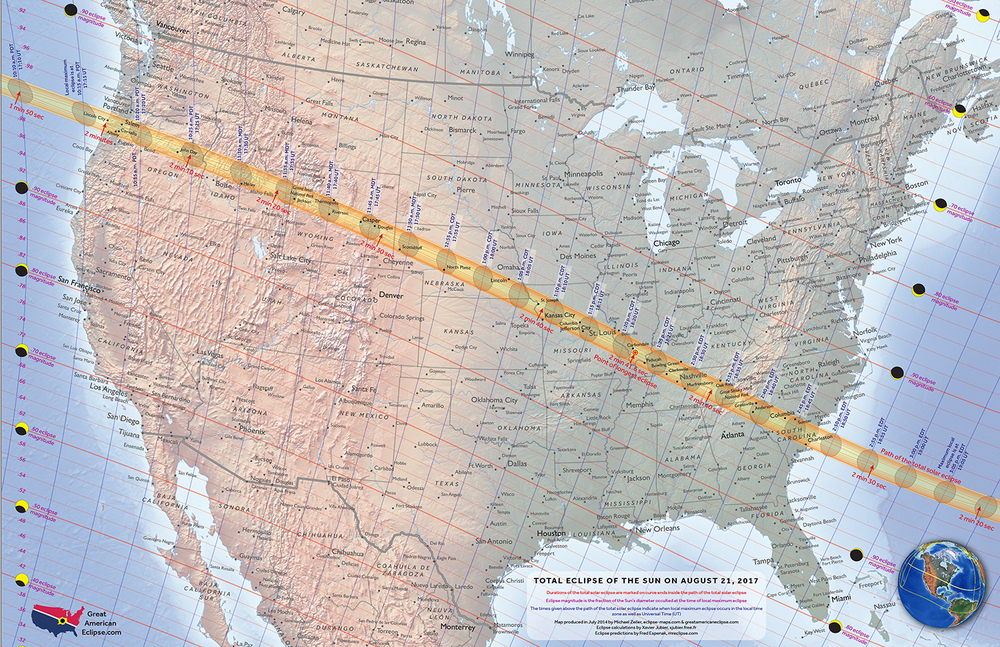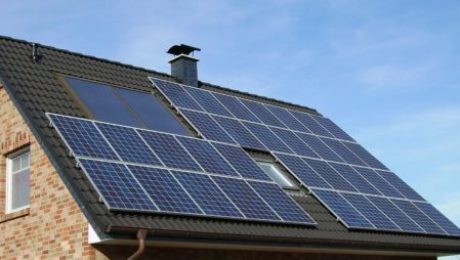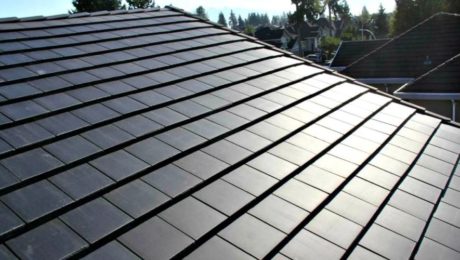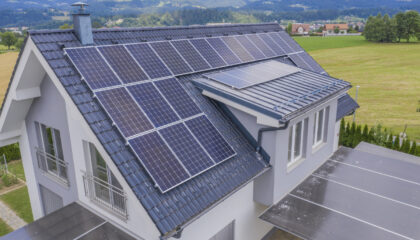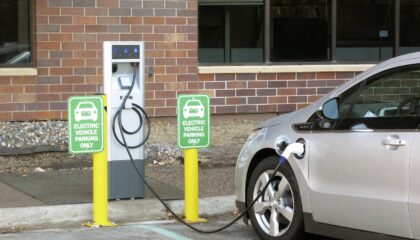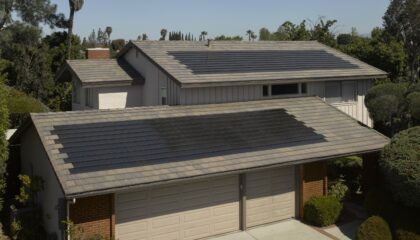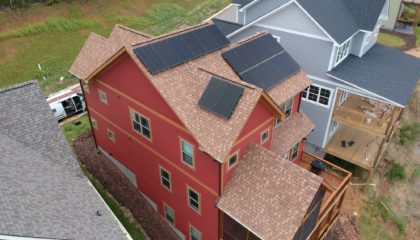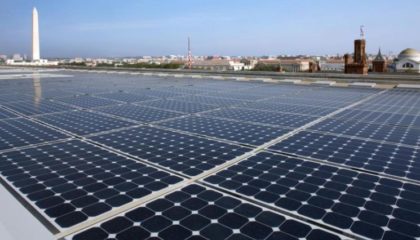Irma Can’t Stop Solar
Irma brought down energy infrastructure as she blew through state after state. The Carolinas lucked out compared to Florida. While Duke restored power to the tens of thousands of Carolinians without in a matter of days, Floridians who call the Keys home expected to be without power for weeks.
Of the millions without power in Florida after Irma, there were reports of one man who managed to keep the lights on. He was able to do so with the help of a solar array and a storage battery.
A combination of an array and battery creates a microgrid, a system consisting of generation and storage. With such a system, individuals use a utility company’s generation as backup when their system is not sufficient. Microgrids producing enough energy allows an individual to operate when a utilities company is down for the count.
Of course, if solar arrays are broken, ripped off a roof, or covered in snow, the microgrid no longer receives power. However, a backup plan to municipal utilities could always come in handy.
The Floridian was able to power part of his house, including air conditioning and his refrigerator. Whether looking for some extra security or preparing for the apocalypse, a microgrid rises to the occasion. With such a system, lives could even be saved as air conditioning or heat is kept on and perishable food is kept cold. Some of the crises we saw
Consider the possibilities of not being dependent on municipalities.
- Published in Solar Technology
Prepare for Autumn Creating a Fall in Solar

Crisp evenings, pumpkin spice lattes, sweaters, boots, and scenic vistas. Fall brings many eagerly awaited perks. However, due to Earth’s rotation, America, and the rest of the Northern Hemisphere, is tilting away from the sun during autumn. In fact, the autumnal equinox is marked by the North Pole being as far from the sun as it will be all year.
Because of this, light waves in the fall are more indirect. Indirect light and greater distance from the sun spurs drops in temperature and less solar energy production. This compounded by shortened daylight hours also caused by Earth’s tilt. Because of this, solar panel owners will see a drop in production during fall, but there are things one can do to better utilize September sun.
Change Tilt of Solar Panels
As the angle of sunlight changes, the angle of solar panels need to change for optimum production. While summer and winter shifts are customary, an autumnal shift could be helpful as well. Be sure to discuss how panels should be tilted in the winter versus the summer with a professional.
Mid-autumn Cleaning
Solar panels can operate with a little grime, so there is no need to clean them often, but a cleaning during autumn could help boost production a little. Unless the array is really dirty, a garden hose should do the job. Otherwise, a spray bottle of warm soapy water and a soft cloth will do. Just clean the surface, not the wiring underneath.
Be sure not to clean at noon on a sunny day. Solar panels get hot, so the morning or evening is better for cleaning. For roof arrays, owners may want to consider professional solar panel cleaning companies. Regardless, always consult with the solar panel manufacturer. They may have advice.
Conservation
There is no way to get summer-time production during the fall, but what cannot be generated may be conserved. Take advantage of balmy temperatures by opting for a blanket instead of turning on the heat or opening windows instead of turning on the air conditioning. In general, be aware of lights on in rooms not being used and vampire technology that uses energy even when it is turned off like a TV or computer.
Enjoy colorful hikes and scarves guilt-free. Solar panels will generate energy as long as the sun shines, and a few steps can optimize that production.
- Published in Uncategorized
Total Solar Eclipse in WNC
The coming and going of the summer solstice brought with it much excitement on our end for all things sun related. Of course, we’re always excited for all things sun related, but these few weeks have much in store for us as we prepare for the solar eclipse. We believe the solar eclipse will firmly knock people’s socks off, and we don’t want anyone to miss it!
By all accounts, WNC is well positioned to experience this most anticipated astronomical events in recent memory, and people are getting very excited for it. On August 21, 2017 a total solar eclipse will make it’s way across the continental United States, starting in Lincoln Beach, Oregon and ending in our neighboring state in Charleston, South Carolina.
Nicknamed “The Great American Eclipse”, this is an event that is sure to inspire awe and wonder in all who manage to catch it.
Lucky viewers within the 70 mile wide path of totality will be able to witness a total solar eclipse, while those that fall outside of that ribbon will only have access to a partial eclipse. Although the total solar eclipse is the more coveted event of the two, either sight is bound to be stunning!
While the total solar eclipse will not be seen in Asheville proper, the surrounding lower regions of WNC will be prime viewing territory for this awe-inspiring event. Check out the image below to see the projected path of the eclipse. The closer your position to the yellow, middle line, the longer you will be able to view the full totality.
The total eclipse is set to enter North Carolina at 2:33:29 pm in Great Smoky Mountains National Park. The surrounding counties of Graham, Macon, Swain, Jackson, and Transylvania will also be in the path of totality, with a host of events planned in each of these locations to celebrate.
All told, the total eclipse will be viewable in North Carolina for roughly 16 minutes.
So what exactly is a total solar eclipse? Why is it special?
A total solar eclipse is a rare event in which the Earth, moon, and sun line up so that the moon completely obscures the sun, leaving only the corona, the sun’s atmosphere, visible from behind the blockade of the moon. This is possible because, despite the fact that the sun is roughly 400 times larger in diameter than the moon, the moon is also 400 times closer to the Earth- thus making their size appear relatively the same.
The video below demonstrates how the rotation and angle of each celestial object changes the direction of the shadow and creates the resulting partial and total eclipses.
This phenomenon is particularly exciting as it is the first time in almost 100 years a total solar eclipse spanned the length of the United States! On June 8, 1918, a total solar eclipse crossed the United States from Washington to Florida- a path very similar to our upcoming show.
Lucky for everyone today, the next predicted total solar eclipse to cross the US is set to happen a short 28 years from now, on August 12, 2045!
How can I see it?
Good question, and a very important one! A common misconception is that it is safe to look up at the sun during a solar eclipse. This is not the case even slightly. Permanent eye damage and/or blindness can result from staring at the sun. The only time that it is safe to look up at a solar eclipse without eye protection is during the few minutes of totality, when the sun is completely blocked by the moon.
Otherwise you must be wearing protective eye equipment (and no, sunglasses do not count) or using an alternate method. A variety of “special-purpose solar filters” are available for purchase online, mostly in the form of eyeglasses (think 3D movie glasses) and run fairly cheap. Or, if you’re crafty and want to give it go, you can always make a pinhole projector!
Are there any events happening?
You bet! WNC will be teeming with solar themed festivals, outings, and educational events.
Some of the highlights include:
- An Eclipse festival in Cashiers, NC
- A moonlight run in Cullowhee, NC
- Special dark (dark!) stout released by Sneak E Squirrel Brewery
- Solar Eclipse Pale Ale to be released by Catawba Brewing Co.
- Viewing of the solar eclipse from the top of Clingman’s Dome in Great Smoky Mountains National Park (note: you will need to get tickets for this!)
- Total solar eclipse viewing at the Pisgah Astronomical Research Institute (PARI). Tickets can be bought here.
Check out the full listing of Jackson County events here, and be sure to check out happenings in Asheville as well!
Quick note and word of caution, this event is expected to bring thousands of tourists/travelers/eclipse chasers to the WNC region. Rough estimates project anywhere between 18,000 and 63,800 people will be traveling to North Carolina just to see the eclipse. Heavy traffic is expected to gridlock streets the closer to the event it gets, so make a plan before August 21st and leave as early as possibly to avoid the traffic!
We sincerely hope that everyone has a chance to view this incredible event, as it is something that many people have described as “beyond wonder”. The Great American Eclipse website has an especially poetic passage about the Splendor of Totality:
You cannot completely prepare yourself for the sight of a total solar eclipse. When totality arrives, you will experience primal emotions and wonderment at the unspeakable beauty of the corona and the panoply of colors and light as you’ve never seen before. You will involuntarily scream, gasp, or perhaps cry at this astounding vision.
When you look at the eclipse, you will perceive the blackest black imaginable surrounded by the Sun’s ever-changing atmosphere, the corona. The quality of light is stupendous with an amazing light show of iridescence, scintillation, and delicate colors.
Another realization that may hit you during totality is that you are watching the solar system in motion. In real-time, you can perceive the relative motions of the Moon around Earth and the Earth around the Sun.
Even for those who have seen it before, a total solar eclipse is an intensely emotional experience. You will feel ecstasy, wonder, and regret when it is over. You will immediately discuss plans to see the next one.
We hope that this event elicits all of these emotions and more, and leaves viewers with a resounding appreciation for the presence of the sun. While the actual solar eclipse is not that great for solar panels (no light = no energy) it is an event that brings people together to discover and discuss the wonders of our solar system; any event that furthers the education and appreciation of our most awesome source of energy is an event that we can all get behind!
Also, if you would like some excellent resources on the upcoming eclipse be sure to check out these two websites:
- Published in Uncategorized
The True Value of Solar Panels: Beyond the ROI
How many years is too many before the payback period on a solar energy system is no longer worth the investment? 9? 10? 14? For many of our customers, the number generally falls somewhere in this range. Solar panels are a considerable upfront investment and, like any good financial decision, people want to see when their investment pays off. It’s sound economics, right?
Well, yes and no.
I say no because the value gained out of installing a solar energy system goes far beyond what you see on the ROI sheet. However, these are typically the only numbers most people take into consideration. This is a missed opportunity in my book.
The true financial payback from installing solar panels could be well over 200% for many homeowners; of course add on the environmental and social returns that come with it and you’re sitting on a hefty payback that does well for both the world and your wallet.
Let’s take a look at the bigger picture…
We crunch numbers and reduce margins left and right trying to get the ROI to an acceptable time-frame- which, as a business dedicated to making solar affordable for everyone, is kind of our mission. We want to give you the lowest possible price we can, and we’ll do it every single time. But sometimes we feel like the concept of “payback” has become this odd entity that looms over solar panels more than it does anywhere else.
When we go to buy a TV, are we considering what the payback is?
When we buy mulch for our yard, are we considering the payback for that?
When we buy a new car we’re obviously getting use out of it, but when’s the payback for that coming?
We derive use and pleasure out of all of these things and we never once stop and ask ourselves “When will this start making money for me?”. It’s just not a thought that comes to mind. We blindly accept that these goods and services cost money and we throw it at them with no regard other than wondering how long they will last us.
When you buy a solar energy system you get use, you get a payback, and if you sell your home the added resale value you can fetch is roughly the cost of the original system itself.
Solar panels not only add value to your property, but they also help sell your home an average of 20% faster than homes without a solar PV system.
In a post by solar website The Cost of Solar they break down exactly just how much you can expect to recoup from installing a solar energy system.

They then go on to explain how it’s possible to recoup a 200%+ return on your solar panel investment.
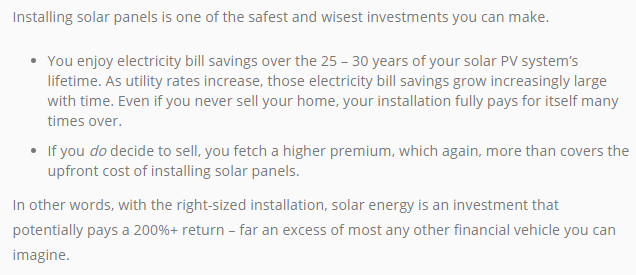
They nailed it- as far as financial decisions go, this one is a potential no-brainer.
In the case of SolFarm Solar Co. President and Founder, Mike Diethelm, the decision shouldn’t just rest on the financial savings. He touched on the environmental motivations and reasonings in a passionate piece he recently shared with SolFarm staff.
“There are so many more things in a solar array that bring utility and happiness to you when you go solar. It’s like brushing your teeth – you are acting responsible, getting minty clean breath to share with your neighbors, giving 40 years of sunshiny solar power — the free fuel that your solar modules use. Oh… and there is a payback! It’s not the world’s worst payback and it’s not just measured in dollars alone. We know that the carbon in the troposphere is causing the planet to warm. Should we wait for someone else to solve that problem? How many years of my carbon footprint should our future generations pay for? I’m putting my footprint down and saying none. I know you will step out of the norm and be that solution. We all do that and KABOOM… payback.”
So there you have it. While we understand that affording a solar energy system is not in the budget for every homeowner, we wanted to shed light on the different ways that you can turn solar panels into a brilliant investment. Not just for your wallet, but for our planet’s future.
As always, Solfarm Solar Co. would love to help you jump start this investment into your energy future. So contact us today for a free quote or even a simple discussion about how solar can be the right choice for you.
- Published in Residential Installation, Solar Energy
Sustainable Design Pro: Kelly Gloger
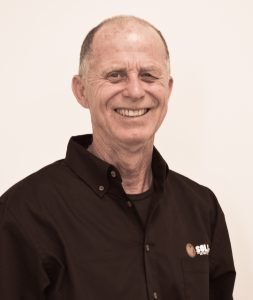 For our first SolFarm Solar Employee Spotlight, we are more than proud to feature the immeasurably passionate and talented Kelly Gloger. Throughout his professional life Kelly has focused mainly on the areas of Sustainable Design and Planning, and brings with him an incredibly impressive resume.
For our first SolFarm Solar Employee Spotlight, we are more than proud to feature the immeasurably passionate and talented Kelly Gloger. Throughout his professional life Kelly has focused mainly on the areas of Sustainable Design and Planning, and brings with him an incredibly impressive resume.
Kelly has been working with SolFarm as a Project Developer for roughly two years, after he and his equally talented partner, Bonnie, and their two dogs moved to Asheville from the US Virgin Islands in February of 2015. Kelly is the son of a dairy farmer and attributes this upbringing as the source of his interest in agriculture and the beneficial reuse of waste materials. As the years progressed, so did Kelly’s interests. He developed passions for renewable energy systems, wastewater reclamation and reuse, community organizing, and planning.
After attending architecture school at the University of Houston, Kelly worked in New England designing and installing passive solar thermal systems. He was then hired as the executive director of the New Hampshire Solar Self-Help Program, a program that assisted low and moderate-income families in the design and installation of solar heating systems for their homes.
Following this foray into the renewable energies field, Kelly refocused his interests on wastewater treatment systems. He worked for two New England engineering firms marketing natural wastewater treatment systems, and soon after returned to school to acquire his Master’s of Science in wastewater treatment technologies for aquaponic food production systems from Texas A & M University.
His graduate school research brought him to the island of St. Croix in the U.S. Virgin Islands, where he was soon hired to work for a commercial-scale aquaponic farm. Following that job, Kelly then worked for Caribbean Infra-Tech, a sustainable design company. He eventually landed a position as a senior associate and master planned the conversion of a 1,200 acre brownfield into an eco-industrial park, among several other projects.
After seven years with CIT Kelly founded Solar Delivered!, a renewable energies company that services commercial and residential properties across all three U.S. Virgin Islands. In 2014 Solar Delivered! was voted best solar company on St. Croix.
In February of 2015, Kelly and co. then relocated to Asheville, NC, where he currently resides.
Kelly’s other passions include sustainable planning and community organizing. Taken from his website, he writes “I have always believed that when a community is involved in planning its own development and future, the final product is superior and embraced.” During his 20 or so years in the Virgin Islands Kelly attached himself to several highly important projects that sought to exemplify this philosophy. These projects include the planning of multiple eco-developments, residences, and parks; he has also served on various boards for community projects such as the Virgin Islands Farmers’ Cooperative and the St. Croix Farmers In Action. He continues to be an activist and deeply involved community member here in Asheville, NC.
In addition to being a highly accomplished professional, Kelly is also an avid fun-haver. He can be found navigating the streets of Asheville, sometimes on his road bike, other times on his long-board. He can also be found out in DuPont and other WNC forests on his mountain bike.
In their downtime, Kelly and Bonnie spend countless hours working around their home. Inside, Bonnie has filled the space with her art and vivacious plants. Outside, they have worked together to transform their property into an environmentalists’ Shangri-La. Two rain water cisterns capable of catching 600 gallons for on-site water reuse flank the garden gate (however their form is so beautiful you would never guess they were anything but art), under the ground a gravel infiltration basin for water runoff has been constructed. Their large vegetable garden is flanked by fruit trees and fully nestled among pollinator indigenous landscaping. On their roof, a solar PV system.
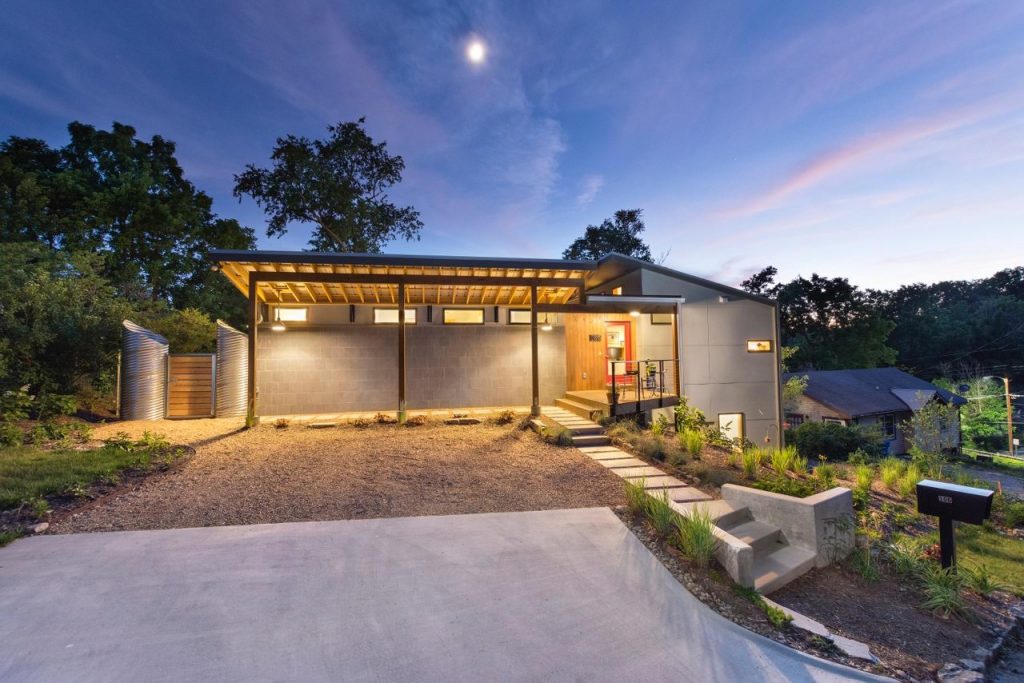
Photo Credit to Thom Gains of Outside In
We are incredibly lucky to have such an accomplished individual and visionary on our team! Kelly is a wonderful asset and a true joy to have around.
We would also like to note that Kelly and Bonnie are the hosts of our upcoming solar open house! The beautiful home pictured above will be open to the solar-curious from 2 to 4 pm on June 24th. Kelly, Bonnie, and the SolFarm team will be there to answer any of your solar questions. You can RSVP to the event here via the Facebook event page.
- Published in Residential Installation, Solar Energy
Tesla Solar Roof Tiles: Customer and Installer Perspective
As solar installers, we’re often asked about the Tesla Solar Roof Tiles. Though aesthetically pleasing on a home, it is not affordable to the average homeowner. Today’s blog is by Spice Solar, our first guest blogger, where they addresses the pros and cons to the Tesla roof tile.
Spice Solar’s Blog and Podcast on Tesla Solar Roof Tiles
Click HERE to listen to the full podcast
There’s no doubt in my mind that the home of the future will be solar powered. Intuitively it would be great if the roofing material provided that solar power. But historically it’s been a challenge to combine efficient solar cells with a durable roofing material at an affordable price. Tesla’s new solar roof tiles hope to solve these challenges.
Without a doubt Tesla’s solar tiles are the best looking solar roofing products I have seen. Using Tesla’s solar roof calculator and information for a 2,000 square foot home in California with a 2,500 square foot roof and $200 monthly electric bill, here is how their roofing tiles compare to an ordinary rooftop solar panel installation:
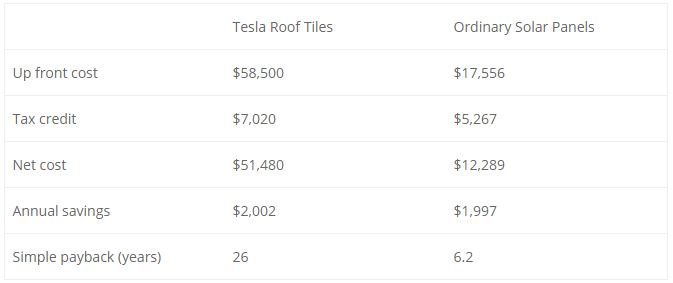
Of course I expect the cost for Tesla roof tile installations to come down in the future, so their economics are likely to improve. Nevertheless, at these high prices it is clear to me that Tesla really has a product that only makes sense for new construction on high end homes. For the average homeowner considering solar, by far the best choice is a traditional rooftop solar power system. For more about Tesla’s solar roof tiles, Listen Up to this week’s Energy Show on Renewable Energy World.
- Published in Solar Technology, Tesla Solar Tiles

